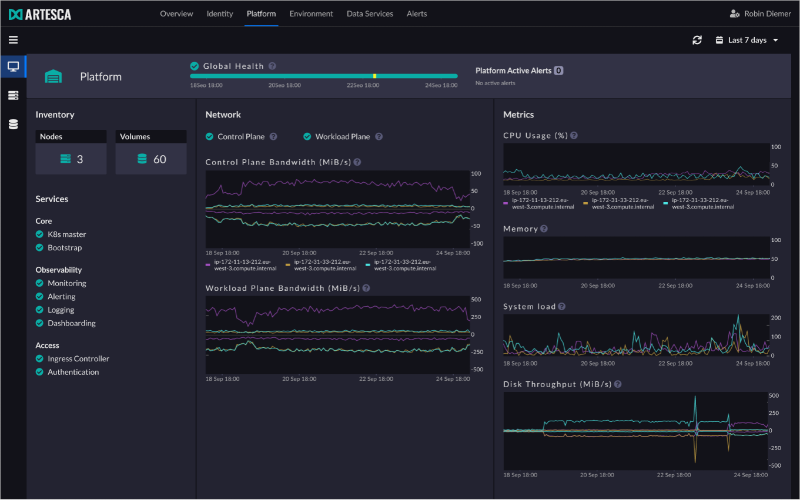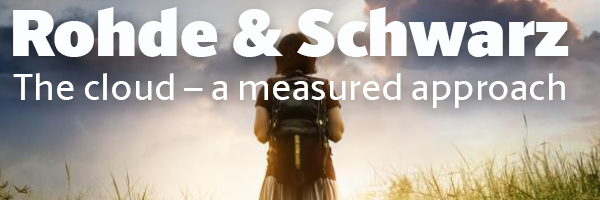Although I’m writing this article in the usual way, by sitting at my desk and tapping on my keyboard, the only app running on my computer is the web browser. I can see the article on the screen but have no idea where it’s being stored. Still I have every confidence that it will be instantly recalled whenever I want it.... provided my modem and Internet service hold up. This is on Google Documents and I am writing into the Cloud. The funny thing is that, for my requirements, it’s almost exactly the same as many other word processors except it automatically saves the document whenever I make a change.
The Cloud is receiving a lot of attention in the TV industry and, no doubt, we will learn more and see new applications at NAB. Back in September 2011 Chyron’s Todd Martin introduced TV-Bay readers to the Cloud. For those who missed his article it likened today’s Internet-connected computers PCs, Apples, etc, to IBM’s low powered ‘Thin clients’ that were networked to hefty mainframes. That was 30 years ago. Today’s Cloud systems require small ‘client’ computers only having to run a web browser, with all the apps you need, hopefully, including storage and suitable processing accessed at the Cloud computing supplier of your choice. Most people will use their PCs or Apples, which are really very overpowered for this requirement. Google has developed its ‘Chromebook’ computer as a suitable Cloud client. If the Cloud really takes off, then the computers on our desks / laptops will all be cut down - and, perhaps, lower priced. The question is, does the Cloud fit in to the professional TV production business?
Making television programmes is very different from word processing. To start with it will involve far larger sums of money. HBO’s Band of Brothers series was described as the most costly TV production ever. The rumoured price tag of $100,000,000 makes you realise the value of the material. The series was shot and posted in London but, to protect the material, it was also copied to two other distant locations around the planet. To me this was a reminder not only of the value of programmes, but also of their vulnerability on physical media. What if somebody dropped the hard drive or there was fire in the facility? So I was surprised to hear objections to using Cloud-based platforms for professional TV applications on the grounds that users would be concerned about the safety of their precious programme footage - because it could not be picked up and put on the shelf. The worried cry goes up, “Exactly where are my pictures?” If that’s really a worry try asking a bank exactly where your money is! We already rely on and trust a virtual world.
Somehow the TV industry has managed to transition its recording media from film (no doubt ideal because you can pick it up and see the pictures!), to videotape and on to hard drives and chips that you can pick up but you cannot see the pictures without a computer or a player - but the media can be reassuringly stacked on the shelf. Now the Cloud has come over the horizon with the offer of alternative storage as well as processing. While this lacks the comfort of physical contact it is likely that the Cloud service provider will taking every precaution to ensure that none of their customers’ data is lost. Of course, this security should be checked before using any particular Cloud service. But the likelihood is that it will offer much greater storage protection that probably exceed those of many in the industry – myself definitely included!
There is a number of Cloud service providers, including Amazon and Google. And surely YouTube in the Cloud? Several companies offer applications for the office such as word processing, email, diary / calender, etc. Zoho is recommended - and it’s free for private / small users. Those using the Cloud on an industrial scale include banks... which makes you think it has to be safe and secure. Small office use generally involves the exchange of a relatively modest number of not very big files. This can work well over broadband connections of moderate speed - even down around 1 Mb/s. If you need processing power, for example to crunch big spreadsheets, then the Cloud’s processing power will be very useful.
This contrasts with video applications that tend to use very large files, and a lot of them. But first it assumes that your video is available as files and that you are probably running a file-based operation. The flow to and from the Cloud via the Internet needs to be carefully looked at. Does it work fast enough for you? If it can, then you have the ability to easily share a project with anyone else - anywhere - and begin collaborative working. In this case the Cloud may just be acting as a shared store with worldwide connectivity by Internet. However it’s likely that you will be looking for more from your cloud and this may well involve something more, which would fall into the categories of software as a service (SaaS), common in most Cloud applications, infrastructure as a service (IaaS) or platform as a service (PaaS) depending on what you want. For example, Todd Martin’s application makes use of SaaS for its Axis World Graphics system.
Probably because of the large volumes of data transfer needed, Cloud usage for TV production to date has been somewhat limited. Or so I thought. But then, I noticed that Forbidden Technologies’ FORscene claims to be the world’s most advanced Cloud video post platform. A quick glance at its website (www.forbidden.co.uk/products/forscene) shows very modest system requirements - 2GB RAM, 1 Mb/s Internet and OS X, Windows (XP, Vista or 7) or Linux. FORscene is used for video review, logging, editing, publishing and hosting - mostly for rough-cut editing.
Cloud fear is simply fear of the unknown. But the reality is that many Cloud applications are already widely used by other industries, as well as some for TV. But we are right to be cautious about the Cloud’s capability to handle video, as it’s demands for bandwidth and processing in particular can be very high. However there is huge potential for relatively low cost sharing and collaborative workflows for editing, graphics and much more.
Highly recommended reading: A Brief Guide to Cloud Computing: An Essential Introduction to the Next Revolution in Computing by Christopher Barnatt.




































